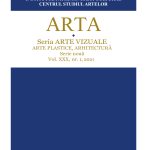Культурное наследие Кишинева 1930-1950 гг.
The cultural heritage of Chisinau in 1930–1950
Author(s): Svetlana Ilvitskaya, Anna PoyanSubject(s): Cultural history, Social history, Interwar Period (1920 - 1939), WW II and following years (1940 - 1949)
Published by: Institutul Patrimoniului Cultural al Academiei de Științe a Moldovei
Keywords: cultural heritage; tourist destination; museumification; air museum;
Summary/Abstract: One of the trends in the development of tourism is the appearance of open-air museums, which are the hallmark of a museum and tourist destination. On the example of the central quarters of Chisinau, the exhibits of the open-air museum can be architectural monuments of the interwar period – preserved urban villas of 1930-40, which combine the characteristic features of Art Nouveau, functionalism, modernism and Neo-Romanian architecture. As world experience shows, the best results in the popularization of historical and cultural heritage are achieved by specially protected historical territories, where new types of museums are organized – air museums or open-air museums. Such an example is the unrealized projects of the 1980s “The Ethnographic Museum of the Moldavian village” and “The Historical Quarter “Pushkinskaya Gorka”. The article examines the three-axis method of “triluchya” as a cultural heritage of urbanism, which was addressed in the post-war years (1945-1948) by the Academician of Architecture A. Shchusev when working on a project proposal - the scheme of the general plan for the development of the city of Chisinau. His idea of enriching the expressiveness of the city was to synthesize the planning traditions of historical neighborhoods while solving the problem of preserving the plasticity of the existing building and its further development.
Journal: Revista ARTA
- Issue Year: 30/2021
- Issue No: 1
- Page Range: 63-68
- Page Count: 6
- Language: Russian

